 I invite you to browse for art prints, greeting cards, apparal and electronics cases at Stuccoloco and Monro Art Online. Stop by and see our new facelift! Support an independent artist by clicking ‘Like’ on my facebook page! Thanks!
I invite you to browse for art prints, greeting cards, apparal and electronics cases at Stuccoloco and Monro Art Online. Stop by and see our new facelift! Support an independent artist by clicking ‘Like’ on my facebook page! Thanks!
What Happened to the 56 Men Who Signed the Declaration of Independence?
 What happened to the 56 men who signed the Declaration of Independence?
What happened to the 56 men who signed the Declaration of Independence?
Tragic Events
Five signers were captured by the British as traitors, and tortured before they died.
Twelve had their homes ransacked and burned.
Two lost their sons serving in the Revolutionary Army; another had two sons captured.
Nine of the 56 fought and died from wounds or hardships of the Revolutionary War.
Thomas McKean was so hounded by the British that he was forced to move his family almost constantly.
He served in the Congress without pay, and his family was kept in hiding. His possessions were taken from him,
and poverty was his reward.
Vandals or soldiers looted the properties of Dillery, Hall, Clymer, Walton, Gwinnett, Heyward, Ruttledge, and Middleton.
At the battle of Yorktown, Thomas Nelson, Jr. noted that the British General Cornwallis had taken over the Nelson
home for his headquarters. He quietly urged General George Washington to open fire. The home was destroyed,
and Nelson died bankrupt.
Francis Lewis had his home and properties destroyed. The enemy jailed his wife, and she died within a few months.
John Hart was driven from his wife’s bedside as she was dying. Their 13 children fled for their lives. His fields and his gristmill
were laid to waste. For more than a year he lived in forests and caves, returning home to find his wife dead and his
children vanished.
Carter Braxton of Virginia, a wealthy planter and trader, saw his ships swept from the seas by the British Navy. He sold his home and properties to pay his debts, and died in rags.
What kind of men were they?
Twenty-four were lawyers and jurists.
Eleven were merchants.
Nine were farmers and large plantation owners.
Men of means, well-educated, and with everything to lose, they signed the Declaration of Independence with the understanding that the penalty would be death if
they were captured.
Remeberance
They signed and they pledged their lives, their fortunes, and their sacred honor.
Let’s keep the sacrifices of these men in mind as we enjoy our Fourth of July festivities.
“All, too, will bear in mind this sacred principle, that though the will of the majority is in all cases to prevail, that will to be rightful must be reasonable; that the minority possess their equal rights, which equal law must protect, and to violate would be oppression.”
Thomas Jefferson
Independent Artist Profile-Karin Taylor
“I began my journey of discovery as an artist in 2002 exploring the world of
mixed media and taking my time to develop the style and nature of the artist I
would become. My message is one of hope, peace, contemplation, harmony and
courage, I see to transport myself and others into a sacred place, a quiet
place, a nostalgic place, a combination of nostalgia and inner child helping to
uproot old ways of being, denial, lostness. My girls are gentle reminders to
recall the mystery of our imagination, the places we visited, the overwhelming
excitement we knew as children. In doing so, and reliving some of those special
memories, one can find they are reengaging with their inner child and
re-experiencing something of that beautiful memory, that wonderful journey all
over again.. The sense of wonderment we had as children, often disappears
amidst the stress of the ordinary every day, but the only difference is that we
aren’t accessing it. It lives within is still, lies buried and hidden, waiting
for the moment when we just relax and let ourselves enjoy and live in the
moment.”
A wonderful artist whose work I highly recommend.
Valentine’s Day – Beyond Romance
 Love in many Forms
Love in many Forms
Familial love, romantic love and love of our fellow man all serve to help us make our world more meaningful. Carry your heart with you as you navigate your way through daily life and allow it to influence your decisions, whether they be job-related, political, or personal.
In the workplace seek to treat co-workers, clients and customers, and all those with whom you interact with respect, integrity and kindness. A dog-eat-dog world breeds more of the same. Choose cooperation over competition. Share your expertise and provide an atmosphere in which all those participating can flourish.
Globally, we live in an era of upheaval, strife, and uncertainty. Make you voice heard and encourage politicians and lawmakers to act with an understanding of our interconnected needs and without selfish agendas. Put yourself in the shoes of others for a moment or two and allow fear to dissolve. There is so much we can learn from others if we are open-minded.
Each member of our family, whether it be husband, wife, father, mother, brother or sister, deserves our appreciation. Joys and sorrows both teach us valuable lessons and help to shape the human being we are today.
When leaving home each day, take your heart with you as you go and use its guidance as you travel through the world and come home with a feeling of having made a difference to someone, somewhere!
Artist Trading Cards (ATCs) and Artist Cards Editions and Originals (ACEOs) by Cindy Haskins Monro (Stuccoloco)
Check out what’s happening in the world of ACEOs and the artists who create them…30 Sec. Aceo artwork video
Follow-up: Surfing Madonna Now at Home in Leucadia
 After being in storage for the last year, the famous 10×10′ stained-glass work depicting Our Lady of Guadalupe on a surfboard pulling into a barreling wave with the message “Save the Ocean” now hangs in between Cafe Ipe and surf shop Surfy Surfy on North Coast Highway in Leucadia.
After being in storage for the last year, the famous 10×10′ stained-glass work depicting Our Lady of Guadalupe on a surfboard pulling into a barreling wave with the message “Save the Ocean” now hangs in between Cafe Ipe and surf shop Surfy Surfy on North Coast Highway in Leucadia.
Being a Virgin of Guadalupe fanatic, I have been following the story (my previous article) and was so happy on Monday when I read (see the article) that she had been successfully installed at a lovely location where she can be appreciated by so many. All is right in the world, or at least in this little piece of it!

Mexican Virgin of Guadalupe Folk Art Mugs

 Mexican folk art, such as the Virgin of Guadalupe or Day of the Dead Sugar Skulls, with its bright colors, vivid imagery, and fun subject matter lends itself well to product design. Espresso mugs have recently been added to the Stuccoloco online card and gift shop. Imported and hand-printed in the USA with vivid detail, these ceramic espresso mugs are dishwasher and microwave safe. They join two sizes of coffee mugs, the 20 oz. Jumbo mug, travel mugs and your choice of styles. Add your text, a name perhaps, to give it that personalized touch. Make great gifts!
Mexican folk art, such as the Virgin of Guadalupe or Day of the Dead Sugar Skulls, with its bright colors, vivid imagery, and fun subject matter lends itself well to product design. Espresso mugs have recently been added to the Stuccoloco online card and gift shop. Imported and hand-printed in the USA with vivid detail, these ceramic espresso mugs are dishwasher and microwave safe. They join two sizes of coffee mugs, the 20 oz. Jumbo mug, travel mugs and your choice of styles. Add your text, a name perhaps, to give it that personalized touch. Make great gifts!
Other artwork, including Mermaids, Butterflies, and other fun designs are also on offer. Don’t see what you want? Contact me for special alterations or requests. Never an extra fee. milagroartmix@gmail.com
Virgin of Guadalupe Cards and gifts
Artist Trading Cards (ATCs) and Artist Cards Editions and Originals (ACEOs) by Cindy Haskins Monro (Stuccoloco)
Virgin of Guadalupe Artwork now on affordable cards
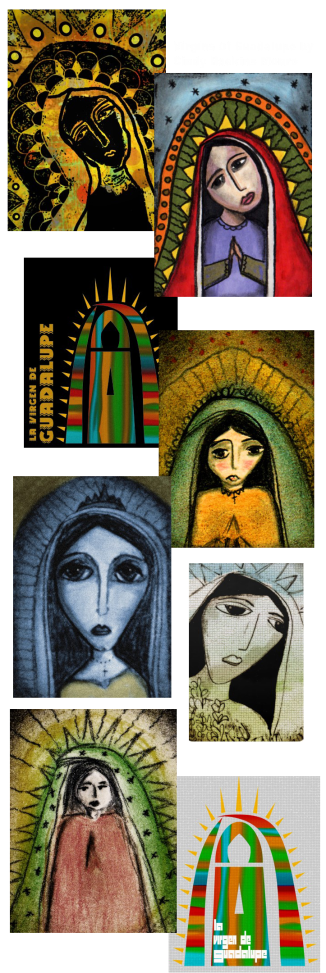 The Mexican cultural and religious icon, the Virgin of Guadalupe, has long been a favorite subject for my artwork. I am happy to offer some of my favorites on affordable greeting cards and postcards at my print-on-demand shop, Stuccoloco.
The Mexican cultural and religious icon, the Virgin of Guadalupe, has long been a favorite subject for my artwork. I am happy to offer some of my favorites on affordable greeting cards and postcards at my print-on-demand shop, Stuccoloco.
I add new images regularly, and also offer Virgin of Guadalupe artwork on other products.
Thank you for looking!
American Red Cross Blood Donation-My First Experience
Why Donate?
My husband, Bruce, has been donating blood for over 10 years. I figured he was representing our family and we were doing our part. I thought they froze the blood and stockpiled it for future use. I thought surely they always have plenty of blood on hand. I was so wrong.
Blood donors make up a mere 5% of the 38% of Americans eligible to donate. I found that statistic rather shocking. Also, red blood cells are refrigerated and have a shelf life of only 45 days. (Your donated blood has been used or has expired 11 days before you are eligible to donate again in 56 days, which explains why it is necessary for the American Red Cross to call upon its donors so often.) Just a few are carrying the load for the many and the daily struggle to meet the demand of hospitals for blood is constant.
My First Experience
Newly informed, I set out last Saturday to donate blood. I was headed for the American Red Cross building in Tucson when I spotted a Red Cross mobile unit about a block away, next to Diamondback Police Supply. I decided to see if I could donate there, since it appeared a blood drive was underway.
I parked my car and walked over to the sign-in sheet where I was greeted by Barbara Belhumeur. I was given material to read, and since I had no appointment, I sat down to wait my turn. I soon noticed everyone seemed to know one another and there was a sense of something special happening in the air. Everyone was smiling, everyone was hugging, with special attention paid to Holly, who was stationed at the sign-in table, as well as to Barbara and a gentleman named Larry. I asked Barbara if this was a special event. It was.
Barbara and Larry Belhumeur lost their son, Holly’s husband, to a devastating illness recently and this was a memorial blood drive. Mark Belhumeur (known for remarking ‘you are a scholar and a gentleman’ when introduced to someone new) had recieved the gift of blood while battling his illness. Though he eventually succumbed, his family wished to give back and to help save the lives of others in his name. Mark had worked at Diamondback Police Supply, which is why the location was so appropriate. He was obviously much loved and is deeply missed by all who knew him. His family and friends did him proud that day.
As I waited my turn, I marveled at the resiliency of the human spirit and at the ability of this lovely family to turn tragedy into hope for others. My name was called and I entered the bus.
I was first seated in a private cubicle by a young, attractive phlebotomist named Alethea , who pricked my finger (felt like a sharp snap, not particularly painful) and took a speck of blood, which she tested for adequate iron. She also checked my blood pressure. I then answred a few questions regarding travel and personal associations, all of which is strictly confidential.
It was determined I was healthy and eligible to donate (I had eaten an iron-rich breakfast and drunk plenty of water, which also makes your veins more accessable) and I was instructed to recline comfortably on a padded bench seat. Alethea inserted the needle neatly and cleanly and approximately 10 minutes later I had given a unit of blood. John, another Red Cross professional, cleaned me up, bandaged me and, after making sure I was feeling OK, sent me to the front of the bus. I thought, ‘what a simple and easy way to impact the lives of others in a beneficial way’.
I made my way to the front of the bus where assorted snacks and beverages had been made available to replenish the energy of donors. While seated in this mini recovery area, I met a young mother named Shannon, who had donated at the same time. Shannon, in her motherly wisdom, had brought along her nine year old daughter, Olivia (darling with long golden hair), so that she could observe and learn. Also on hand was Elisa Rister, Mrs. Arizona 2009, who is friend to Holly Belhumeur. She is as beautful and as down to earth as they come and provided wonderful support to the cause.
After chatting a while, I was free to go. I asked everyone’s permission to mention them in this article. They all kindly agreed. We hugged and I walked away feeling like I had done something meaningful that morning. I know I will become a regular, lifelong donor thanks to the generosity of spirit I experienced with the Belhumeur family and the kind, professional attention I received from the American Red Cross professionals, Alethea and John. My heartfelt thanks to all of you for making my first blood donation so memorable!
About the American Red Cross
 Founded in 1881 by Clara Barton, the American Red Cross is a humanitarian organization led by volunteers. They provide relief to victims of disaster and help people prevent, prepare for, and respond to emergencies.
Founded in 1881 by Clara Barton, the American Red Cross is a humanitarian organization led by volunteers. They provide relief to victims of disaster and help people prevent, prepare for, and respond to emergencies.Mexico’s Chihuahua-a Little Dog with Big Personality!
Paco
Thanks to Paco, a Mexican Chihuahua my Mother recently adopted from the local animal shelter, I have become fascinated with these little creatures. His personality is charming and his antics are hilarious.
I share below information I have put together, mostly from Wikipedia, to satisfy our curiosity about the origins, temperaments, care and health of Chihuahuas in general. I also include my Chihuahua artwork along with that of some of my fellow artists who sell Chihuahua themed products. They make great Christmas gifts for those of us enamored with the breed.
I hope you find the article useful and the artwork interesting.
History
The Chihuahua’s history is puzzling and there are many theories surrounding the origin of the breed. Both folklore and archeological finds show that the breed originated in Mexico. The most common theory and most likely is that Chihuahuas are descended from the Techichi, a companion dog favored by the Toltec civilization in Mexico; however, no records of the Techichi are available prior to the 9th century. It is probable that earlier ancestors were present prior to the Mayans as dogs approximating the Chihuahua are found in materials from the Pyramids of Cholula, predating 1530 and in the ruins of Chichen Itza on the Yucatán Peninsula.
Some historians believe that the Chihuahua came from the island of Malta in the Mediterranean. More evidence for this theory lies in European paintings of small dogs that resemble the Chihuahua. One of the most famous paintings is a fresco in the Sistine Chapel by Sandro Botticelli dated 1480–1482. The fresco, depicting the Trials of Moses, shows a boy holding a tiny dog with round head, large eyes, big ears, and other characteristics similar to those of the Chihuahua. The painting was finished ten years before Columbus returned from the New World. It would have been impossible for Botticelli to have seen a Mexican dog, yet he depicted an animal strikingly similar to a Chihuahua.
A progenitor of the breed was reputedly found in 1850 in old ruins near Casas Grandes in the Mexican state of Chihuahua from which the breed gets its name, although most artifacts relating to its existence are found around Mexico City. The state borders Texas, Arizona and New Mexico in the United States, where Chihuahuas first rose to prominence. Since that time, the Chihuahua has remained consistently popular as a breed, particularly in America when the breed was first recognized by the American Kennel Club in 1904. In terms of size, the present day Chihuahua is much smaller than its ancestors, a change thought to be due to the introduction of miniaturized Chinese dogs, such as the Chinese crested dog, into South America by the Spanish.
Descriptions and Standards
Breed standards for this dog do not generally specify a height, only a weight and a description of their overall proportions. As a result, height varies more than within many other breeds. Generally, the height ranges between six and ten inches; however, some dogs grow as tall as 12 to 15 inches (30 to 38 cm). Both British and American breed standards state that a Chihuahua must not weigh more than six pounds for conformation. However, the British standard also states that a weight of two to four pounds is preferred and that if two dogs are equally good in type, the more diminutive one is preferred. The Fédération Cynologique Internationale (FCI) standard calls for dogs ideally between 1.5 and 3.0 kg (3.3 to 6.6 lbs.), although smaller ones are acceptable in the show ring. Pet-quality Chihuahuas (that is, those bred or purchased as companions rather than show dogs) often range above these weights, even above ten pounds if they have large bone structures or are allowed to become overweight. This does not mean that they are not purebred Chihuahuas; they do not meet the requirements to enter a conformation show. Oversized Chihuahuas are seen in some of the best, and worst, bloodlines. Typically the breed standard for both the long and short coat chihuahua will be identical except for the description of the coat.
Chihuahua breeders often use terms like Teacup, Pocket Size, Tiny Toy, Miniature or Standard to describe puppies. These terms are not recognized by the breed standards and are considered marketing gimmicks to inflate the value of puppies. Chihuahuas are commonly referred to as either Apple heads or Deer heads, the former having short noses and rounded heads similar to that of an apple; the latter having longer noses and more elongated heads.
Coat
The Kennel Club in the United Kingdom and the American Kennel Club in the United States only recognize two varieties of Chihuahua: the long-coat, and the smooth-coat, also referred to as short-haired. They are genetically the same breed. The term smooth-coat does not mean that the hair is necessarily smooth, as the hair can range from having a velvet touch to a whiskeryfeeling. Long-haired Chihuahuas are actually smoother to the touch, having soft, fine guard hairs and a downy undercoat, which gives them their fluffy appearance. Unlike many long-haired breeds, long-haired Chihuahuas require no trimming and minimal grooming. Contrary to popular belief, the long-haired breed also typically sheds less than their short-haired counterparts. It may take up to two or more years before a full long-haired coat develops.
Color
Chihuahuas come in virtually any color combination, from solid to marked or splashed, allowing for colors from solid black to solid white, spotted, sabled, or a variety of other colors and patterns. Colors and patterns can combine and affect each other, resulting in a very high degree of variation. Common colors are fawn, red, cream, chocolate, blue, and black. No color or pattern is considered more valuable than another.
The merle coat pattern, which appears mottled, is not traditionally considered part of the breed standard. In May 2007, The Kennel Club decided not to register puppies with this coloration due to the health risks associated with the responsible gene, and in December of that year formally amended the Breed Standard to disqualify merle dogs. The Fédération Cynologique Internationale, which represents the major kennel club of 84 countries, also disqualified merle. Other countries’ kennel clubs, including Canada, Australia, New Zealand, and Germany, have also disqualified merle. However, in May 2008, the Chihuahua Club of America voted that merles would not be disqualified in the United States, and would be fully registrableand able to compete in American Kennel Club (AKC) events. Opponents of merle recognition suspect the coloration came about by modern cross-breeding with other dogs, and not via natural genetic drift.
A Chihuahua must be chosen with care, as the temperament of its owner can make a difference in the temperament of the pup. Ill tempered Chihuahuas can be easily provoked to attack, and are therefore generally unsuitable for homes with small children. The breed tends to be fiercely loyal to one particular owner and in some cases may become over protective of the person, especially around other people or animals.If properly managed by older children, 13 and up, they can adapt to this kind of living with a dedicated owner. They do not always get along with other breeds, and tend to have a “clannish” nature, often preferring the companionship of other Chihuahuas over other dogs. These traits generally make them unsuitable for households with children that are not patient and calm. Chihuahuas love their dens and will often burrow themselves in pillows, clothes hampers, and blankets. They are often found under the covers or at the bottom of the bed, deep in the dark and safety of what they believe is their den.
Health Disorders
This breed requires expert veterinary attention in areas such as birthing and dental care. Chihuahuas are also prone to some genetic anomalies, often neurological ones, such as epilepsy and seizure disorders.
Chihuahuas, and other toy breeds, are prone to the sometimes painful disease hydrocephalus. It is often diagnosed by the puppy having an abnormally large head, or hydrocephalus, during the first several months of life, but other symptoms are more noticeable since “a large head” is such a broad description. Chihuahua puppies exhibiting hydrocephalus usually have patchy skull plates rather than a solid bone and typically are lethargic and do not grow at the same pace as their siblings. A true case of hydrocephalus can be diagnosed by a veterinarian, though the prognosis is grim.
Chihuahuas have moleras, or a soft spot in their skulls, and they are the only breed of dog to be born with an incomplete skull. The molera fills in with age, but great care needs to be taken during the first six months until the skull is fully formed. Some moleras do not close completely and will require extra care to prevent injury. Many veterinarians are not familiar with Chihuahuas as a breed and mistakenly confuse a molerawith hydrocephalus.
Chihuahuas can also be at risk for hypoglycemia, or low blood sugar, which is especially dangerous for puppies. Left unattended, hypoglycemia can lead to coma and death but can be avoided with frequent feedings, such as every three hours for very small or young puppies. Chihuahua owners should have a simple sugar supplement on hand to use in emergencies, such as, Nutri-Cal, Karo syrup or honey. These supplements can be rubbed on the gums and roof of the mouth to rapidly raise the blood sugar level. Signs of hypoglycemia include lethargy, sleepiness, low energy, uncoordinated walking, unfocused eyes and spasms of the neck muscles or head pulling back or to the side.
Chihuahuas are prone to eye infections or eye injury due to their large, round, protruding eyes and their relatively low ground clearance. Care should be taken to prevent visitors or children from poking the eyes. The eyes also water frequently to remove dust or allergens that may get into the eye. Daily wiping will keep the eyes clean and prevent tear staining.
Collapsed trachea (reverse sneezing) is a health concern that is characteristic of the chihuahua breed.
Chihuahuas have a tendency to tremble but it is not a health issue. Instead, it occurs mainly when the dog is stressed, excited or cold. Cold can also present a problem for these small animals. They often enjoy wearing coats or sweaters when outside and enjoy digging and snuggling in blankets when sleeping.
Although figures often vary, as with any breed, the average lifespan range for a healthy Chihuahua is between 10 and 17 years.
Chihuahuas are sometimes picky eaters and care must be taken to provide them with adequate nutrition. Sometimes wet or fresh food can have the most appealing smell to these constant eaters. Chihuahuas are prone to hypoglycemia and could be at a critical state if allowed to go too long without a meal. At the same time, care must be exercised not to overfeed them.
Chihuahuas have a notorious problem with dental issues. Dental care is a must for these little creatures. Human food should be avoided. Due to their small size, even tiny high fat or sugary treats can result in an overweight Chihuahua. Overweight Chihuahuas are susceptible to having an increased rate of joint injuries, tracheal collapse, chronic bronchitis, and shortened life span.
Chihuahuas are also known for a genetic condition called ‘luxating Patella,’ a genetic condition that can occur in all dogs. In some dogs, the ridges forming the patellar groove are not shaped correctly and a shallow groove is created. In a dog with shallow grooves, the patella will luxate or slip out of place, sideways. It causes the leg to ‘lock up’ and will force the chihuahua to hold its foot off the ground. When the patella luxates from the groove of the femur, it usually cannot return to its normal position until the quadriceps muscle relaxes and increases in length, explaining why the affected dog may be forced to hold his leg up for a few minutes or so after the initial displacement. While the muscles are contracted and the patella is luxated from its correct position, the joint is held in the flexed or bent position. The knee cap sliding across the femur can cause some pain due to the bony ridges of the femur. Once out of position, the animal feels no discomfort and continues with activity.
Chihuahuas are also prone to some heart related disorders such as heart murmurs and Pulmonic Stenosis, a condition in which the blood outflow from the heart’s right ventricle is obstructed at the pulmonic valve.
Chihuahuas, along with other miniature dogs such as Chinese Cresteds, are prone to physical deformities, especially in old age; several chihuahuas and cross-bred chihuahua/Chinese crested mixes have rated highly in the World’s Ugliest Dog Contest, including a purebred chihuahua named Princess Abby that won the 2010 contest and a crossbreed named Yoda that won the 2011 contest.
As artists, we each have our own interpretations of the Chihuahua, but we all love these unique little dogs with the big personalities!
Previous postsStuccoloco MerchandiseStuccoloco ChihuahuasZazzle Chihuahua Designs Marketplace

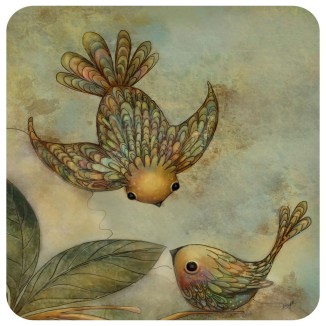
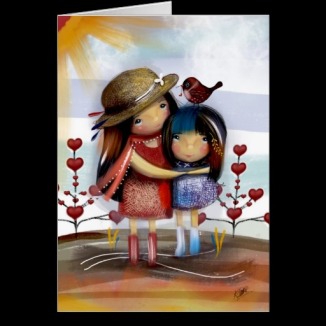
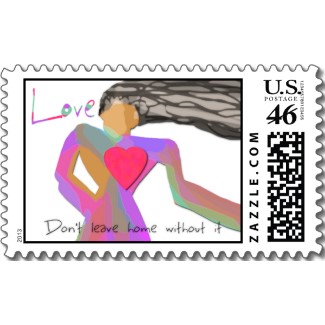
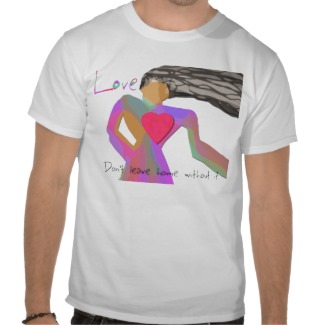

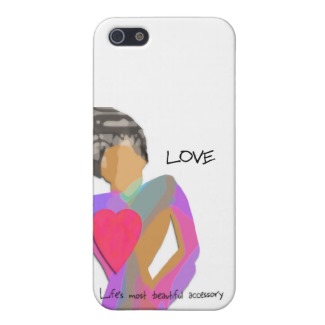

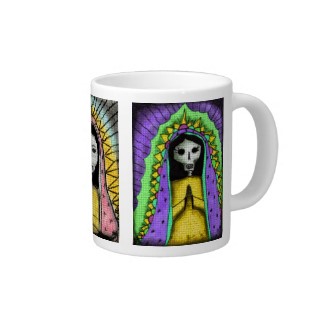
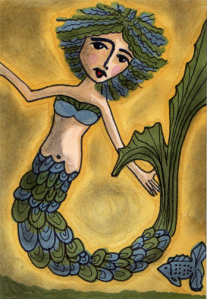












You must be logged in to post a comment.